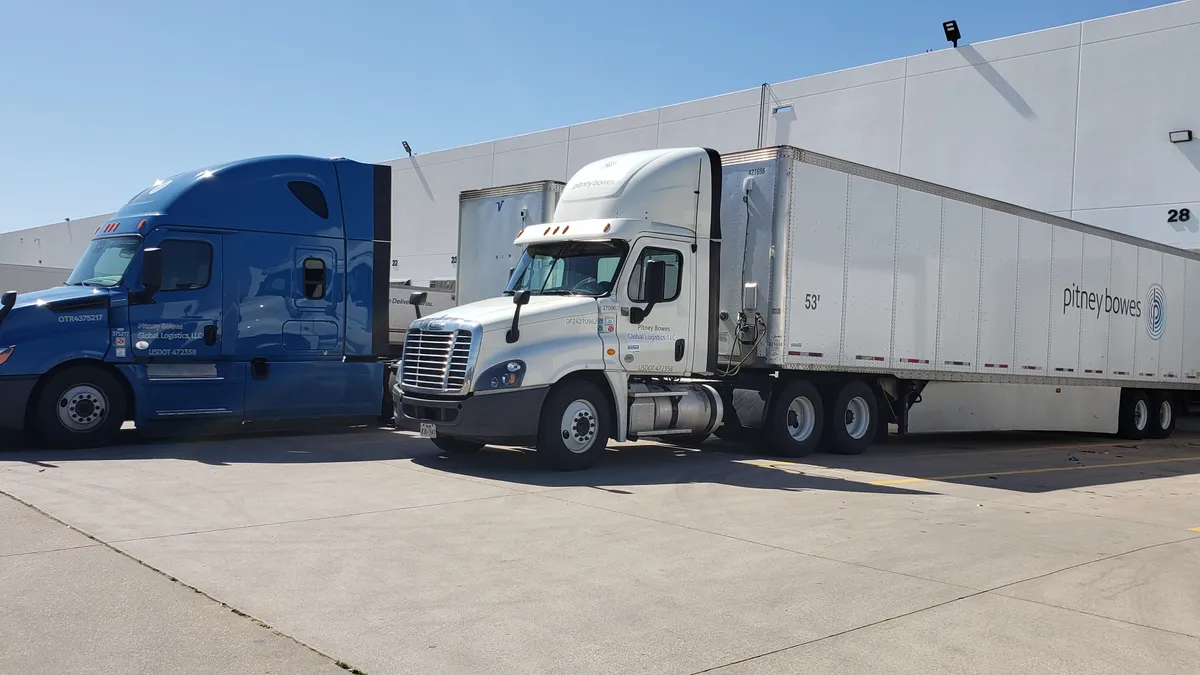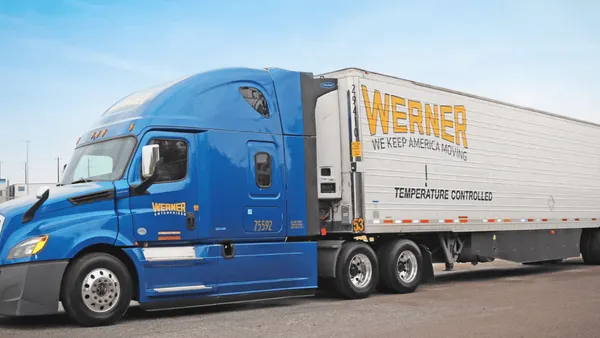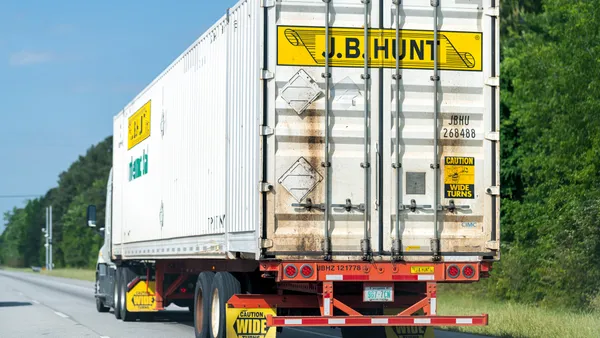Dive Brief:
- Pitney Bowes increased its truck fleet by 42% YoY to reduce its exposure to the spot market and other third-party transportation, executive vice president and CFO Ana Chadwick said on the company's Q3 earnings call.
- As Pitney Bowes' volumes spiked last year, it became more vulnerable to rates in the spot market that have climbed amid higher demand and limited capacity, President and CEO Marc Lautenbach said. Pitney Bowes, the Postal Service's largest workshare partner, primarily uses trucks to transport parcels from its sortation facilities to Postal Service facilities.
- For Pitney Bowes, contracting a driver on the spot market can cost between $3,500 to $4,000 a lane, while using in-house transportation can cost just $600, Lautenbach said.
Spot linehaul rates
Dive Insight:
Elevated trucking rates in 2021 led companies to alternatives for paring down or offsetting their transportation costs. Some turned to intermodal. Others locked in higher-than-normal contract rates. And a few passed on costs to customers.
Pitney Bowes insulated itself from spot market volatility by investing in its own truck capacity. The company insourced seven transportation lanes in Q1 and planned on insourcing 20 more lanes in Q2. Owned capacity comes with better service levels since spot market freight "doesn't get necessarily the same priority as others," Lautenbach said in April.
On the Q3 call, Lautenbach didn't specify the amount of lanes Pitney Bowes added but said the company will continue to bolster its in-house fleet.
"As you are able to do that, you become less reliant on the spot market," Lautenbach said. "And the spot market economics versus having your own internal transportation is dramatically different. I mean, it can be four or five times different per lane, so substantial benefits there."
Tight truck capacity continues to spur elevated rates, which has forced companies to spend on freight shipping at record levels. Spot load posts in October declined 3.3% from September but were 35.2% higher YoY, according to DAT data.
Load-to-truck ratios
High transportation costs aren’t expected to subside any time soon. In addition to a lack of truck drivers, the industry is now facing a lack of new equipment, adding further pressure to limited capacity, according to U.S. Bank.
"Our new spending data reflects what we're hearing on the ground from our clients: There's high demand for truck freight transportation, but truck capacity is limited by both persistent issues of continued driver shortages and emerging challenges of equipment," Bobby Holland, U.S. Bank vice president and director of Freight Data Solutions, said in a statement. "The industry is working tirelessly to meet the increasing demand, but these challenges will take time to address."













